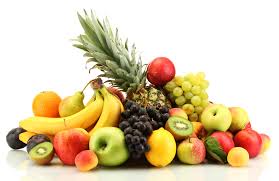 By Andrew Kim
By Andrew Kim
Introduction
As the research evolves, the matter of diet and nutrition is being forced to be recognized as not only the most poorly understood of all the sciences but also one of the most complex, outranking all the others.
Weight loss is a recurrent theme on this site and this should be expected, as obesity is the most common “disease” in the United States.1 But herein lies a wrinkle that adds to the complexity of this matter: What constitutes a healthy weight is not an objective, uniformly agreed upon standard.
Suffice it to say here, we know that having excess body fat is strongly linked to cardiovascular disease, kidney disease, diabetes, and hypertension. It also aggravates arthritis, gout, gallbladder disease, and blood lipid disorders. And, it appears to aggravate certain cancers.2
The interplay among the fat tissue, organs, muscles, and immune system is, to me, highly complex – even after drawing out all the ways in which they do in great detail. However, up until doing researching for this post, I hadn’t fully appreciated the dimension added to this interplay by the intestinal flora and biome.
In light of the extreme claims made on behalf of (expensive) probiotic and prebiotic supplements, such as in the video below…
…my inaugural post for this site will present, in my estimation, the most important experiments that have added clarity about the connection among intestinal flora, metabolism, and weight loss. What will be clear is that:
- There are observed differences between the intestinal flora of lean and the intestinal flora of obese individuals.
- The interaction between the host and the intestinal flora is intricate and entails changes in the host gene expression involved in nutrient – particularly carbohydrate – processing and appetite regulation, which are not fully understood.
- High-fat diets promote the passage of a bacterial poison called endotoxin into the body, potentially leading to endotoxemia (arbitrarily defined as when endotoxin levels rise by 2- to 3-fold above normal levels).
- Weight loss is probably the great equalizer in that weight loss, in and of itself, reverts the intestinal flora and biome of obese individuals to that of lean individuals.
OBESITY AND THE INTESTINAL FLORA
 Obesity changes the gut flora, and these changes have been directly correlated with a host of metabolic imbalances and diseases in animals. This fact should not be a surprise anymore, as the intestinal flora is now known to play an indispensable role in the nutrient metabolism – particularly carbohydrate metabolism – of its host. It was shown, for instance, that in the rectum, over 100 genes are regulated differentially by intestinal flora; and in the jejunum, over 200 genes.3
Obesity changes the gut flora, and these changes have been directly correlated with a host of metabolic imbalances and diseases in animals. This fact should not be a surprise anymore, as the intestinal flora is now known to play an indispensable role in the nutrient metabolism – particularly carbohydrate metabolism – of its host. It was shown, for instance, that in the rectum, over 100 genes are regulated differentially by intestinal flora; and in the jejunum, over 200 genes.3
But test tube studies like the one described above are obviously limited in what we can take away from them. Luckily, many of the assumptions and hypotheses about the intestinal flora are testable in living organisms.
In one now classic experiment, despite eating 30 percent less food than germ-free mice, normal mice were 40 percent fatter than germ-free mice. In a follow up experiment, upon inoculating germ-free mice with the flora from normal mice, the germ-free mice became about 60 percent fatter and developed insulin resistance after 2 weeks, despite eating less food than normal.4 Leptin levels increased, too, and though the authors merely correlated the increase in leptin to the increase in fatness, it was probably also driving the insulin resistance that had developed.
Since living in a germ-free environment isn’t possible and since wiping out the flora in our intestines entirely would lead to serious deficiencies and malnutrition, we could, next, investigate dietary interventions that alter the microbial biome in a way that matches that of healthy and lean individuals.
Generally, mice fed on high-fat diets have a significant increase in endotoxin levels – indicating either a greater ratio of gram-negative bacteria to gram-positive bacteria in the intestines, as only gram-negative bacteria have coats that bear endotoxin. Endotoxin is quite toxic to the human body5 and large exposures to it can be quickly life threatening and fatal.
In short, endotoxin creates a state of shock in the human body – known as septic shock. Lucky for us, to get to this point, very large bacterial invasions into the body are needed by way of breaks in the skin – including the “skin” of the intestines.
However, at relatively lower, chronic doses, endotoxin:
- Favors wide spread blood clotting
- Leads to fatty liver conditions
- Promotes oxidative stress and metabolic disorders (including glucose intolerance and insulin resistance)
- Initiates an immune response (however, I’m open to the possibility that this effect, though the mechanisms are less clear to me, may actually serve the host favorably in the big picture)5
Further, mice fed on high-fat diets, compared to high-carbohydrate diets, have reduced concentrations of Bifidobacterium species – a major type of gram-positive bacteria normally present in the intestines of mammals. A lower concentration of Bifidobacterium species creates a vacuum in which more virulent, endotoxin-bearing gram-negative bacteria could seed and proliferate. (Because of the presence of endotoxin in their coats, gram-negative bacteria are not only more virulent than gram-positive bacteria, but they are also more resistant to antibiotics, as antibiotics have difficulty penetrating this outer coat.) In fact, Bifidobacterium species reduce the intestinal endotoxin load, and at the same time, strengthens the intestinal barrier.6
I mention this fact to point out how a simple dietary change could, by altering the intestinal biome, bring about marked changes in a person’s metabolism and health – regardless of the amount of calories consumed.
Further, the introduction of Bifidobacterium species has been shown to reduce the intestinal endotoxin load, improve the barrier functioning of the intestinal wall, and protect against obesity and endotoxemia brought about by a high-fat diet.7
Although the majority of studies showing an increase an endotoxin levels caused by high-fat diets were performed in rodents, I think, considering the major way in which endotoxin moves into the body, it’s reasonable to assume that the same result would be seen in humans.
Endotoxin is continuously generated and released into the intestines by bacteria upon their destruction or death. From there, endotoxin is transported into the capillaries, which surround the intestines, via newly made lipoproteins called chylomicrons, whose formation is stimulated by the presence of dietary fat. So following a high-fat meal, a rise, albeit a usually modest rise, of endotoxin would be seen in the blood.
Before I leave this train of thought and move cautiously along to my recommendations, we need to consider one additional seminal experiment, which was carried out in humans. In said experiment, weight loss – via a low-fat diet or a calorie restricted low-carbohydrate diet – resulted in a shift in the intestinal microbial ecology in obese subjects, more closely matching that of lean controls.4 In other words, weight loss, in and of itself, altered the intestinal microbial biome favorably.
RECOMMENDATIONS
 I’ve always been skeptical about the use of probiotics and prebiotics, and up until doing research for this post saw little evidence to justify their use for any condition – the evidence was so thin.
I’ve always been skeptical about the use of probiotics and prebiotics, and up until doing research for this post saw little evidence to justify their use for any condition – the evidence was so thin.
However, evidence from clinical trials in humans is emerging on the use of prebiotics and probiotics – particularly for the reduction in heart disease risk.
But whether an altered intestinal biome through the use of probiotics or prebiotics could accelerate fat lass and eradicate obesity in humans is unclear to me at this point and I seriously have my doubts about the effectiveness of orally administered probiotic and prebiotic supplements and foods.
From my own experiments and observations, I have been an advocate for, foremost, maximizing and expanding the capacity of oxidative energy generation to promote weight loss and health at the same time – cliché as this is. (At least until fecal probiotic transplants are properly tested for safely reducing body fat and become easily available to us all). Fundamentally, this entails the following:
- Increasing oxygen delivery to cells.
- Supplying adequate amounts of B vitamins, as many of the coenzymes and carrier molecules that operate (as cardinal adsorbents) in the mitochondrial respiratory chain are made from thiamine, riboflavin, niacin, etc. Ubiquinone, also known as CoQ10, is also important, and the more cholesterol we produce, the more ubiquinone will be made in the amounts needed by cells. Sucrose, namely its fructose half, is a potent stimulator of cholesterol synthesis.8
- Maintaining the optimal rate of secretion, blood levels, and conversion of thyroid hormone, as thyroid hormone is the main regulator of a person’s metabolic rate and stimulates all reactions in the mitochondria involved in oxidative metabolism.
Regarding the first point, suffice it to say here, putting a brake on the excessive release and oxidation of fatty acids enhances the delivery of oxygen to cells and prevents tissue hypoxia. Ditching high-fat low-carbohydrate diets serve this purpose. In addition, “fast-moving” blood is essential, so platelet aggregation and fibrin production must be kept under control.
Because absorbed endotoxin stimulates fibrin production (and interferes with oxidative metabolism), its entry into the body must be minimized (or its removal from the body must be cranked up).
Vitamins K1 and K2, for instance, by enhancing the activity of an intestinal enzyme, minimizes the errant passage of endotoxin (and other harmful substances) into the body. Vitamin K can be gotten from green vegetables and smaller amounts from fermented dairy and soy products.
Salicylates block the production of a certain prostaglandin that causes platelets to clump and blood vessels to constrict. Aspirin and other non-steroidal antiinflammatory drugs (NSAIDs) are end products of salicylates, which occur abundantly in plants – especially in fruits. Gotten from plants – namely fruits – salicylates are delivered to the body at a safer rate and concentration than drugs. Salicylates also happen to prevent some of the inflammatory responses initiated by endotoxin.
Stress should be kept as low as possible. Space does not permit me to go further into what I mean here except to say that cravings – namely for salt, sugar, and more food – should not be ignored or suppressed. This act of defiance imposes undue stress on the body, further enhancing fibrin production. Listen closely to your body, not diet gurus or Jenny Craig, please.
Of obvious note yet still worth bringing to your attention, one should avoid smoking and excessive alcohol consumption to promote efficient oxidative metabolism because smoking increases the exposure to carbon monoxide, a metabolic poison, and alcohol increases the permeability of the intestinal barrier.
And finally, although the research and evidence for this last recommendation is relatively scant, I would try to eat smaller meals spaced equally throughout the day, instead of large, infrequent meals. Compared to large meals, I think small meals place less burden on the liver, keep blood sugar levels more steady, reduce endotoxin levels, and decrease the likelihood of storing the food you eat as fat, rather than to generate energy.
 Andrew Kim is a graduate of the University of Maryland with degrees in Microbiology and Japanese. His blog has garnered much attention since its release earlier this year. Read more of Kim’s work at www.andrewkimblog.com
Andrew Kim is a graduate of the University of Maryland with degrees in Microbiology and Japanese. His blog has garnered much attention since its release earlier this year. Read more of Kim’s work at www.andrewkimblog.com
REFERENCES
- Overweight and Obesity. Centers for Disease Control and Prevention (2013). at http://www.cdc.gov/obesity/data/adult.html
- Clinical Guidelines on the Identification, Evaluation, and Treatment of Overweight and Obesity in Adults–The Evidence Report. National Institutes of Health. Obesity research 6 Suppl 2, 51S–209S (1998).
- Mutch, D. M. et al. Impact of commensal microbiota on murine gastrointestinal tract gene ontologies. Physiological genomics 19, 22–31 (2004).
- Ley, R. E. et al. Obesity alters gut microbial ecology. Proceedings of the National Academy of Sciences of the United States of America 102, 11070–5 (2005).
- Rang, H. P., Dale, M. M., Ritter, J. M., Flower, R. J. Henderson, G. Rang Dale’s Pharmacology. 792 (2011).
- Griffiths, E. A. et al. In vivo effects of bifidobacteria and lactoferrin on gut endotoxin concentration and mucosal immunity in Balb/c mice. Digestive diseases and sciences 49, 579–89 (2004).
- Cani, P. D. et al. Selective increases of bifidobacteria in gut microflora improve high-fat-diet-induced diabetes in mice through a mechanism associated with endotoxaemia. Diabetologia 50, 2374–83 (2007).
- Silbernagel, G. et al. Cholesterol synthesis is associated with hepatic lipid content and dependent on fructose/glucose intake in healthy humans. Experimental diabetes research 2012, 361863 (2012).


